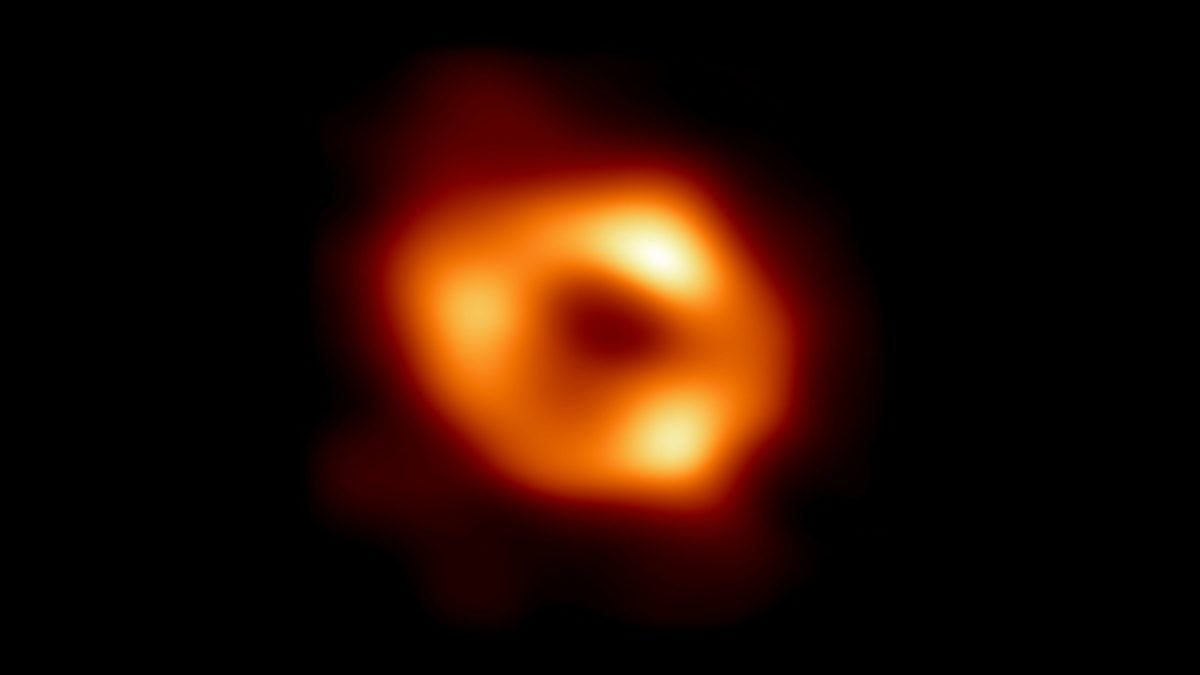In a historic first, astronomers have captured an image of the supermassive black hole at the center of the Milky Way galaxy. The black hole is known as Sagittarius A*, and is located near the border of the Sagittarius and Scorpius constellations. Sagittarius A* is about 27,000 light-years away from Earth, and 4 million times more massive than our sun. Scientists explained the distance by equating seeing the black hole from Earth to trying to see a donut on the moon.
Black holes are notoriously hard to photograph, as they do not emit light, and any surrounding light is bent and distorted from the hole’s gravitational pull. These images come courtesy of the international consortium behind the Event Horizon Telescope, a collection of eight synchronized radio telescopes across the world. Michael Johnson, astrophysicist at the Center for Astrophysics | Harvard & Smithsonian, said, “For decades, astronomers have wondered what lies at the heart of our galaxy, pulling stars into tight orbits through its immense gravity, … With the (Event Horizon Telescope or EHT) image, we have zoomed in a thousand times closer than these orbits, where the gravity grows a million times stronger. At this close range, the black hole accelerates matter to close to the speed of light and bends the paths of photons in the warped (space-time).”
The University of Arizona’s Feryal Ozel described the black hole as “the gentle giant in the center of our galaxy.” Ozel explained the difficulties in obtaining the image, saying “What made it extra challenging was the dynamic environment of Sgr A*, a source that burbled then gurgled as we looked at it, … and the challenges of looking not only through our own atmosphere, but also through the gas clouds in the disk of our galaxy towards the center. It took several years to refine our image and confirm what we had, but we prevailed.” More than 300 researchers from across the globe collaborated on the EHT project.
This is the second black hole photographed by the EHT, which captured the supermassive black hole M87* in the distant Messier 87 galaxy (55 million light-years from Earth) in 2019. Sagittarius A* is more than 1,000 times smaller than M87*.
Sera Markoff, co-chair of the EHT Science Council and a professor of theoretical astrophysics at the University of Amsterdam, noted “We have two completely different types of galaxies and two very different black hole masses, but close to the edge of these black holes they look amazingly similar, … This tells us that (Einstein’s theory of) General Relativity governs these objects up close, and any differences we see further away must be due to differences in the material that surrounds the black holes.”
In addition to these new visuals, we also know what black holes sound like, thanks to NASA:
Congratulations to the team at EHT on this stunning achievement.
(via CNN, image: NASA Via Getty Images)
—The Mary Sue has a strict comment policy that forbids, but is not limited to, personal insults toward anyone, hate speech, and trolling.—










Published: May 12, 2022 02:13 pm